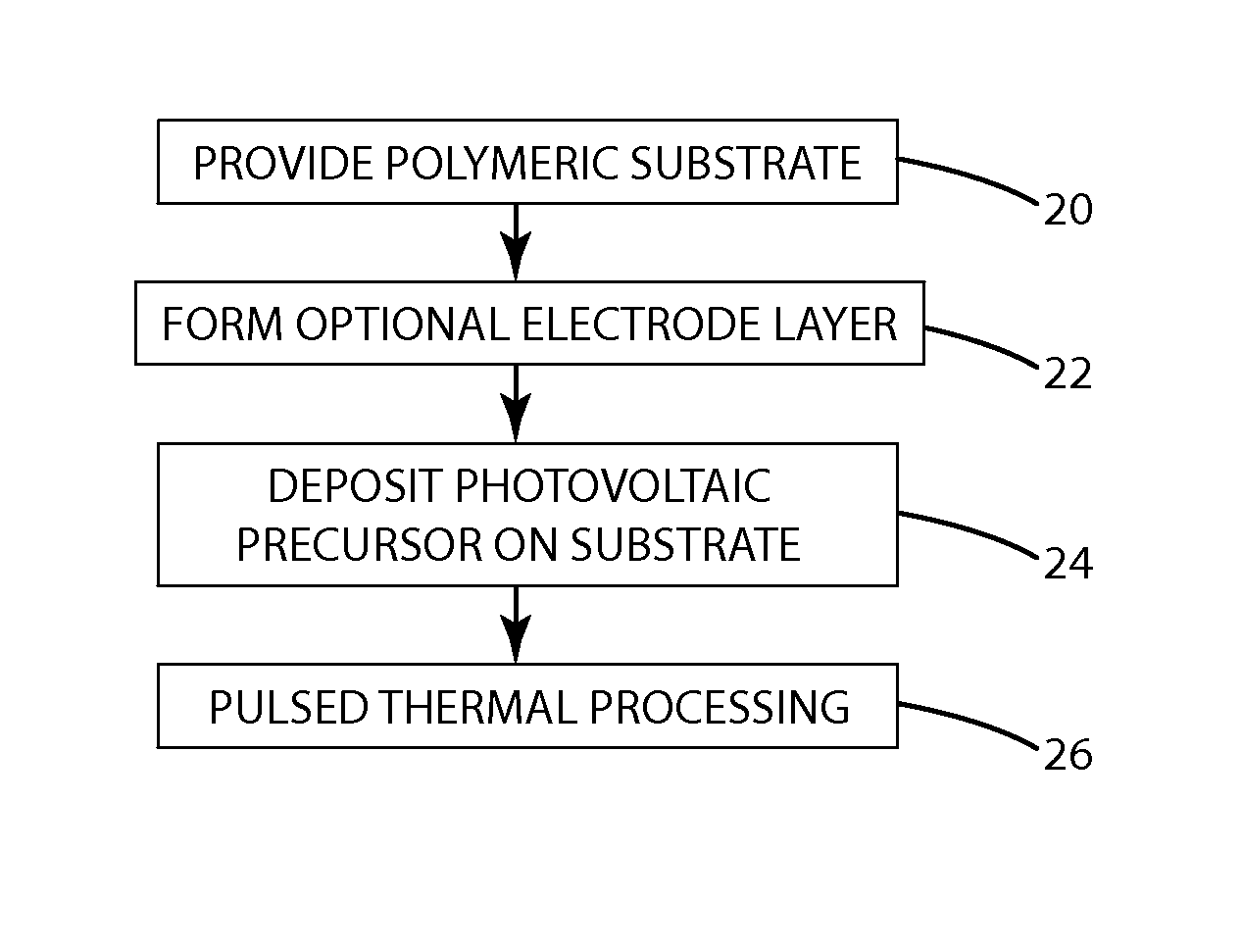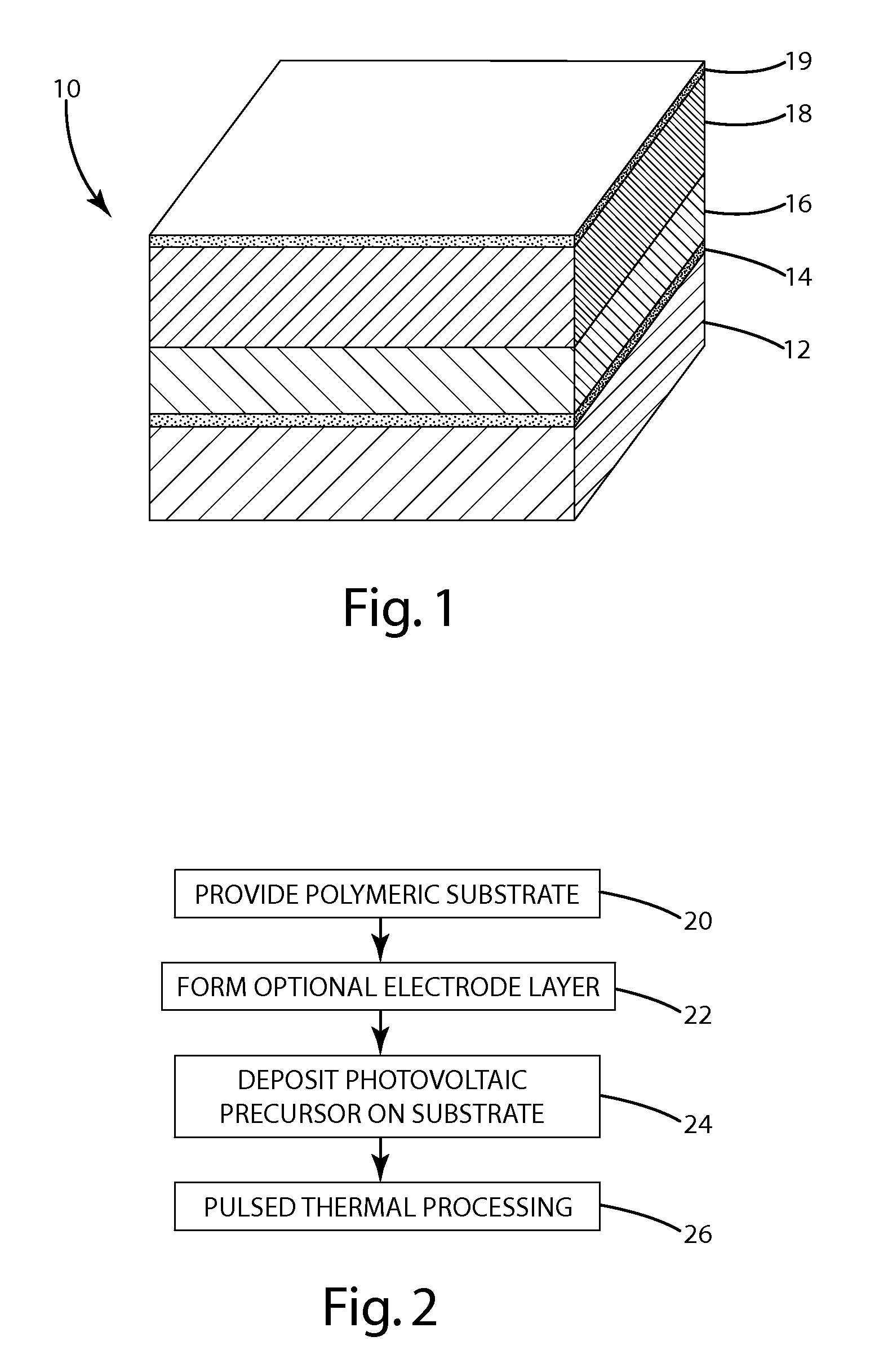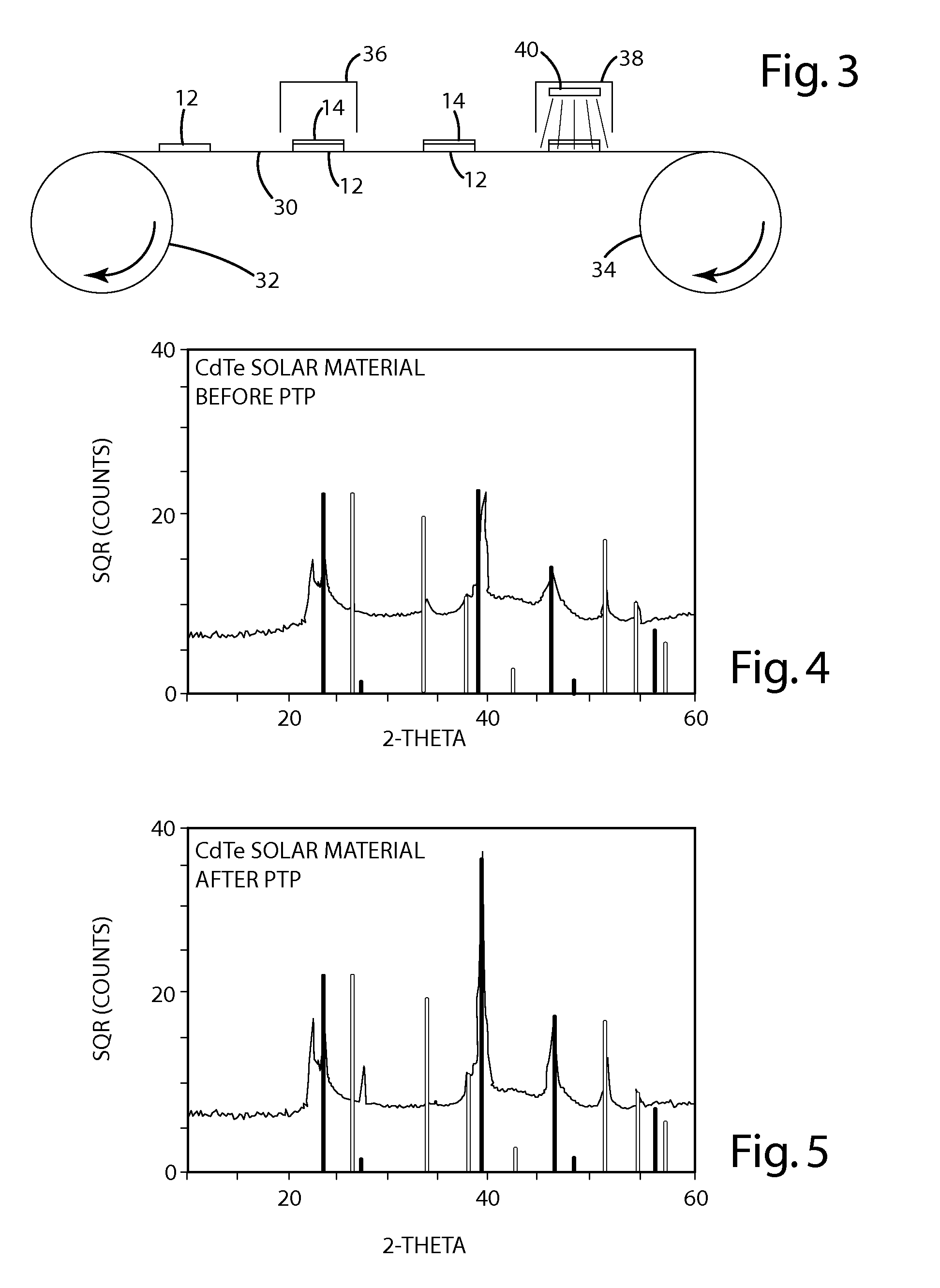High volume method of making low-cost, lightweight solar materials
a solar cell and high-volume technology, applied in the field of solar cell manufacturing methods, can solve the problems of poor efficiencies, low production efficiency, and inability to permit low-cost manufacturing approaches such as roll-to-roll techniques, and achieve the effects of reducing the upper operating temperature, and reducing the weight of the photovoltaic devi
- Summary
- Abstract
- Description
- Claims
- Application Information
AI Technical Summary
Benefits of technology
Problems solved by technology
Method used
Image
Examples
Embodiment Construction
[0022]The invention as contemplated and disclosed herein can greatly improve the manufacture and processing of high efficiency photovoltaics. In particular, the present invention includes a process using intense pulses of radiant energy to improve the material quality and grain size of photovoltaic precursor(s) supported by a flexible substrate.
[0023]FIG. 1 shows a partial cross-section of one example of a photovoltaic device 10 manufactured in accordance with the present invention. The photovoltaic device 10 can form part of a solid-state semiconductor solar cell or any other photovoltaic cell adapted to convert solar energy into electricity. The photovoltaic device 10 may be fabricated in sheets of a size appropriate for its intended use. It may also be fabricated on small substrates or in configurations other than sheets. For example, the photovoltaic device 10 may be fabricated as a small solar cell for a hand-held electronic device or on large sheets to be applied to large area...
PUM
 Login to View More
Login to View More Abstract
Description
Claims
Application Information
 Login to View More
Login to View More - R&D
- Intellectual Property
- Life Sciences
- Materials
- Tech Scout
- Unparalleled Data Quality
- Higher Quality Content
- 60% Fewer Hallucinations
Browse by: Latest US Patents, China's latest patents, Technical Efficacy Thesaurus, Application Domain, Technology Topic, Popular Technical Reports.
© 2025 PatSnap. All rights reserved.Legal|Privacy policy|Modern Slavery Act Transparency Statement|Sitemap|About US| Contact US: help@patsnap.com



